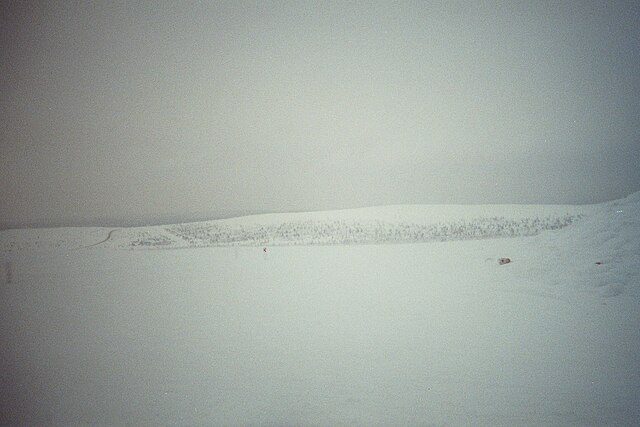The subarctic zone is a region in the Northern Hemisphere immediately south of the true Arctic, north of humid continental regions and covering much of Alaska, Canada, Iceland, the north of Fennoscandia, Northwestern Russia, Siberia, and the Cairngorms. Generally, subarctic regions fall between 50°N and 70°N latitude, depending on local climates. Precipitation is usually low, and vegetation is characteristic of the taiga.
Subarctic vegetation in Canada (Larix laricina)
In Fennoscandia and northwestern Russia, oceanic influences soften winter temperatures; the lack of permafrost allow agriculture and infrastructure. Lenvik, Norway, at 69°N.
Images taken near Unalakleet show very few trees, reflecting the subarctic and polar boundaries.
The Arctic is a polar region located at the northernmost part of Earth. The Arctic region, from the IERS Reference Meridian travelling east, consists of parts of northern Norway, northernmost Sweden, northern Finland, Russia, the United States (Alaska), Canada, Danish Realm (Greenland), and northern Iceland, along with the Arctic Ocean and adjacent seas. Land within the Arctic region has seasonally varying snow and ice cover, with predominantly treeless permafrost under the tundra. Arctic seas contain seasonal sea ice in many places.
MODIS image of the Arctic
A snowy landscape of Inari located in Lapland (Finland)
Arctic poppy in bloom within the Qausuittuq National Park on Bathurst Island
Muskox







